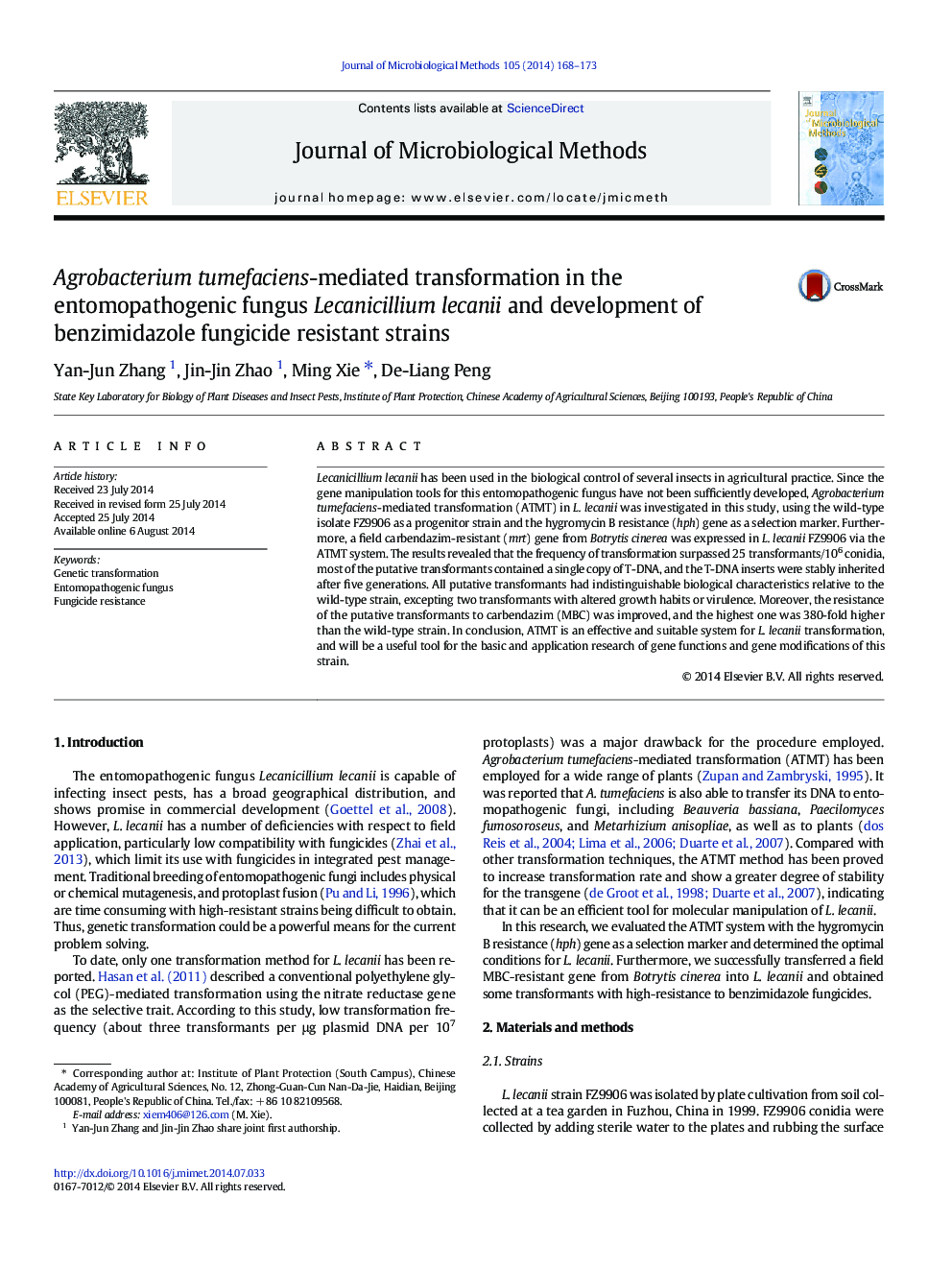| Article ID | Journal | Published Year | Pages | File Type |
|---|---|---|---|---|
| 8422167 | Journal of Microbiological Methods | 2014 | 6 Pages |
Abstract
Lecanicillium lecanii has been used in the biological control of several insects in agricultural practice. Since the gene manipulation tools for this entomopathogenic fungus have not been sufficiently developed, Agrobacterium tumefaciens-mediated transformation (ATMT) in L. lecanii was investigated in this study, using the wild-type isolate FZ9906 as a progenitor strain and the hygromycin B resistance (hph) gene as a selection marker. Furthermore, a field carbendazim-resistant (mrt) gene from Botrytis cinerea was expressed in L. lecanii FZ9906 via the ATMT system. The results revealed that the frequency of transformation surpassed 25Â transformants/106 conidia, most of the putative transformants contained a single copy of T-DNA, and the T-DNA inserts were stably inherited after five generations. All putative transformants had indistinguishable biological characteristics relative to the wild-type strain, excepting two transformants with altered growth habits or virulence. Moreover, the resistance of the putative transformants to carbendazim (MBC) was improved, and the highest one was 380-fold higher than the wild-type strain. In conclusion, ATMT is an effective and suitable system for L. lecanii transformation, and will be a useful tool for the basic and application research of gene functions and gene modifications of this strain.
Related Topics
Life Sciences
Biochemistry, Genetics and Molecular Biology
Biotechnology
Authors
Yan-Jun Zhang, Jin-Jin Zhao, Ming Xie, De-Liang Peng,
